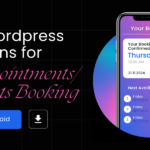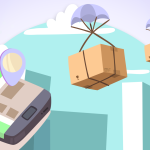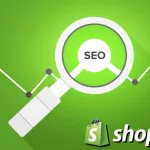A sales funnel, simply put, is a marketing concept that illustrates the journey potential customers go through on their way to making a purchase.
Picture the shape of a funnel — wide at the top and narrow at the bottom. The wide entrance represents the many potential customers at the beginning of the journey, and the narrow exit is the smaller, targeted group who have moved through the funnel and purchased your product or service.
The sales funnel is a handy tool that helps businesses nurture leads and turn them into loyal customers. It’s all about reaching the right people at the right time with the right message.
Really, you have one whether you choose to call it that or not. Your customers don’t magically buy from you; they go through a process of discovery, research, and conversion. A sales funnel helps streamline the journey and make it easier for customers to find what they’re looking for and take the action you want them to take.
In this article, we’ll show you a few of the benefits of a sales funnel (a well-defined one, that is).

1. It visualizes the customer journey.
Marketing and sales teams don’t really know what a customer does before buying. But web analytics and sales/marketing automation platforms give them a good idea of how they engage with the company’s content.
Organizing those touchpoints into a funnel helps salespeople and marketers visualize what a customer knows about the company, how they perceive it, and their likelihood to convert.
2. It informs your content marketing strategy.
You can’t just put out content and expect people to read it and convert. For it to be meaningful, it has to connect with your audience. That means it needs to be relevant to their needs at the specific time they’re seeing it.
Companies need to create different content for different stages of the buying journey. For example, an individual who is already familiar with the company’s product and has visited its website several times will probably want to see comparisons, pricing information, and product use cases. This differs dramatically from someone who might be completely unfamiliar with the product and is just looking for an answer to a question.
By looking at the customer journey in the context of a sales funnel, you can gain insight into which content is best for each stage. This helps you create useful and effective content to share with your prospects.
3. It makes it easier to capture and nurture leads.
An organized content strategy can easily move your customers through the conversion process. When they continuously get the answers they’re looking for, they’re more likely to trust your product and see you as a valuable source of information.
You won’t be able to target your buyers this effectively, however, unless you have a funnel with explicitly defined characteristics. With no way of looking at a lead and assigning them to a specific category, you won’t be able to effectively personalize their experience.
4. It helps you measure success.
When you know who your prospects are, what their needs are, and how they convert, it’s easier to track performance metrics like marketing ROI and cost per acquisition (CPA).
With a sales funnel in place, you’ll be able to identify the areas of your marketing strategy that drive conversions and make the most impact. You can also measure your funnel’s effectiveness by tracking key metrics, such as traffic sources, page views, time on site, and conversion rates.
5. It’s the best way to maximize your resources.
Spending more on marketing won’t get you anywhere faster. Neither will increasing your outbound sales volume. You need to act with intention. Otherwise, you’re wasting your time.
Investing in the right types of content, personalization, and audience targeting will help you get more results from the same resources. By creating an organized sales funnel with clearly defined stages, you can ensure that your marketing and sales teams are focusing on the right things.
6. It costs you nothing.
Since the sales funnel is a natural process, it’s technically already implemented. All you have to do is analyze your data, create a structure around it by mapping out the customer journey, and creating relevant content based on what you learn.
If you use marketing automation tools or CRM, you already have a sales funnel visually in place. All you have to do is act on the data and use it as your North Star.
Final thoughts
Having a sales funnel means you’re not just running campaigns and hoping they work. You’re ensuring your customers are getting the information they need without wasting time or resources. A well-defined sales funnel can help you increase conversions, build trust with your customers, and maximize the value of every customer for better ROI.











